Tony Perkins of the American Family Council, gay-basher in chief, not only doesn’t speak for all Christians, he doesn’t speak for all evangelicals. Nor do Charles Colson, James Dobson, or Tim LaHaye. It would seem there is a younger crowd, a new generation, that is raising questions about the traditional evangelical intolerance toward gays. Yes, the move toward gay equality is advancing at all levels of religious and secular society, even within the quarter most associated with rigorous opposition.
A small but growing group which calls itself Evangelicals Concerned offers support for gays seeking reconciliation of their faith and their sexuality:
Organizations or churches with Evangelical roots have traditionally been the most condemning, exclusionary and antagonistic to Christians who identify as GLBT. This bias has produced untold levels of damage to many children of God and has caused many to abandon their faith traditions or commit suicide. Evangelical organizations are responsible for virtually every attempt to convert GLBT people. EC has challenged the conversion therapy notion for 25 years, standing in the gap and providing healing and safety to thousands of Christians.
The Gay Christian Network (GCN) also consists of mostly evangelical members. Earlier this summer, I met one of their leaders when we both happened to be workshop presenters at the Lutherans Concerned Convention in Minneapolis.
The Gay Christian Network is a nonprofit ministry serving Christians who happen to be lesbian, gay, bisexual, or transgender, and those who care about them.
Like many Christian mothers, Sandy was completely unprepared to learn that her son was gay.
How could he be? Everything she had been taught in church had led her to one conclusion, that gay people were sinful, that they had turned from God, and that they were ultimately condemned to hell. Yet none of that fit the profile of her beloved son. He was a good son, and he loved God. How could he be gay?
For five months after learning of her son’s sexuality, Sandy was a wreck. She was sure that homosexuality was not of God. Yet she loved her son. She needed answers, but she didn’t know where to turn.
Then she found GCN.
 An article in the Huffpost this week questioned, Is Evangelical Christianity having a Great Gay Awakening? Author Cathleen Falsani suggests that she struggled to accommodate traditional evangelical Biblical ethics with the reality of the gay relationships in her circle of friends.
An article in the Huffpost this week questioned, Is Evangelical Christianity having a Great Gay Awakening? Author Cathleen Falsani suggests that she struggled to accommodate traditional evangelical Biblical ethics with the reality of the gay relationships in her circle of friends.
That was my answer: Love them. Unconditionally, without caveats or exceptions.
I wasn’t sure whether homosexuality actually was a sin. But I was certain I was commanded to love.
For 20 years, that answer was workable, if incomplete. Lately, though, it’s been nagging at me. Some of my gay friends are married, have children and have been with their partners and spouses as long as I’ve been with my husband.
Loving them is easy. Finding clear theological answers to questions about homosexuality has been decidedly not so.
Falsani then discusses a book by none other than Jay Bakker, the son of the famous televangelists of a generation ago, Jim and Tammy Fay Bakker, called Fall to Grace: A Revolution of God, Self & Society .
.
“The simple fact is that Old Testament references in Leviticus do treat homosexuality as a sin … a capital offense even,” Bakker writes. “But before you say, ‘I told you so,’ consider this: Eating shellfish, cutting your sideburns and getting tattoos were equally prohibited by ancient religious law.
“The truth is that the Bible endorses all sorts of attitudes and behaviors that we find unacceptable (and illegal) today and decries others that we recognize as no big deal.”
Leviticus prohibits interracial marriage, endorses slavery and forbids women to wear trousers.
 Bakker’s exegesis is quite right, and he could have gone further. When I have presented workshops interpreting the so-called “clobber passages” of the Bible, I point out that these ancient Hebrew regulations were religious rules and not universal ethics, loosely akin to the modern day ritual of meatless Fridays, formulated from a consistent pattern of Hebrew rituals of boundaries, markers, and insularity. Don’t do as the Gentiles do. Don’t mix with the Gentiles. Don’t mix unlike things. Don’t mix seeds in your field. Don’t mix different fabrics in the same garment. Don’t cavort with the temple prostitutes of the Gentiles (male and female). Don’t follow the sexual practices of the Gentiles. Don’t eat meat from animals that confuse their category. A shellfish doesn’t have fins or swim like a fish; it is an abomination. Don’t eat shellfish.
Bakker’s exegesis is quite right, and he could have gone further. When I have presented workshops interpreting the so-called “clobber passages” of the Bible, I point out that these ancient Hebrew regulations were religious rules and not universal ethics, loosely akin to the modern day ritual of meatless Fridays, formulated from a consistent pattern of Hebrew rituals of boundaries, markers, and insularity. Don’t do as the Gentiles do. Don’t mix with the Gentiles. Don’t mix unlike things. Don’t mix seeds in your field. Don’t mix different fabrics in the same garment. Don’t cavort with the temple prostitutes of the Gentiles (male and female). Don’t follow the sexual practices of the Gentiles. Don’t eat meat from animals that confuse their category. A shellfish doesn’t have fins or swim like a fish; it is an abomination. Don’t eat shellfish.
Here is the preface to the chapter in Leviticus that contains the infamous clobber passage:
You shall not do as they do in the land of Egypt, where you lived, and you shall not do as they do in the land of Canaan, to which I am bringing you.
Leviticus 18:3
Ritual regulatory rules of behavior for the ancient Hebrews are complicated, which cannot be adequately addressed here, but perhaps that is the essential point; it’s not as simple or as black and white as the literalists would suggest. When we understand the context of their ancient formulation, we recognize a ritualistic and symbolic system of separation of a besieged peoples, anxious to preserve their identity against the dangers of assimilation by the empires that dominated them militarily and politically.
Falsani also discussed Bakker’s interpretation of the New Testament, Pauline “clobber passages”, and Bakker again is accurate when he suggests:
Examining the original Greek words translated as “homosexual” and “homosexuality” in three New Testament passages, Bakker (and others) conclude that the original words have been translated inaccurately in modern English.
What we read as “homosexuals” and “homosexuality” actually refers to male prostitutes and the men who hire them. The passages address prostitution — sex as a commodity — and not same-sex, consensual relationships, he says.
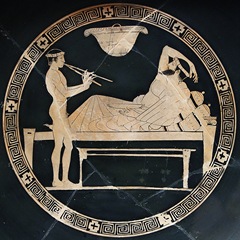 In my workshops, I dig deeper. Modern day Bible versions that include the word “homosexual” are anachronistic at best and political at worst. Paul used two Greek words, arsenokotai and malakoi, which do not otherwise appear in the writings of the period; thus, it appears he may have coined them himself. Bakker’s suggestion that the terms refer to prostitution may be correct, but I think the better interpretation is that the terms refer to the Greco-Roman practice of pederasty, involving an aristocrat and a young man or boy, which was fairly common in the period. Again, attempting to make sense of Paul’s two-thousand year old writings is complicated, and there’s more to it than fits in this blog, but the essential point is that Paul’s writings were conditioned by a 1st century context. The issues facing Paul were not the same issues we face today.
In my workshops, I dig deeper. Modern day Bible versions that include the word “homosexual” are anachronistic at best and political at worst. Paul used two Greek words, arsenokotai and malakoi, which do not otherwise appear in the writings of the period; thus, it appears he may have coined them himself. Bakker’s suggestion that the terms refer to prostitution may be correct, but I think the better interpretation is that the terms refer to the Greco-Roman practice of pederasty, involving an aristocrat and a young man or boy, which was fairly common in the period. Again, attempting to make sense of Paul’s two-thousand year old writings is complicated, and there’s more to it than fits in this blog, but the essential point is that Paul’s writings were conditioned by a 1st century context. The issues facing Paul were not the same issues we face today.
Falsani’s experience—“Some of my gay friends are married, have children and have been with their partners and spouses as long as I’ve been with my husband”—persuaded her that the traditional application of the Biblical “clobber passages” didn’t fit for her and for a growing number of her evangelical friends. She concludes:
Only time will tell whether more evangelical leaders — Emergent, emerging or otherwise — will add their voices to the chorus calling for full and unapologetic inclusion of homosexuals in the life of the church.
But I’m sensing a change in the wind (and the Spirit.)
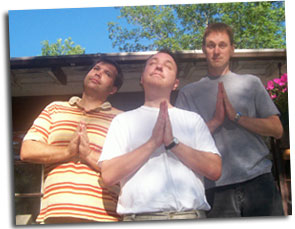
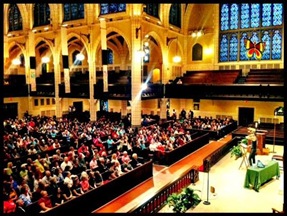
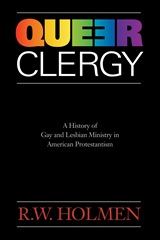
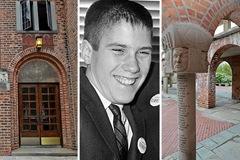
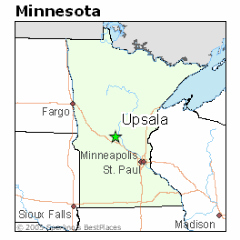



 Earlier we posted about Sean Simonson
Earlier we posted about Sean Simonson